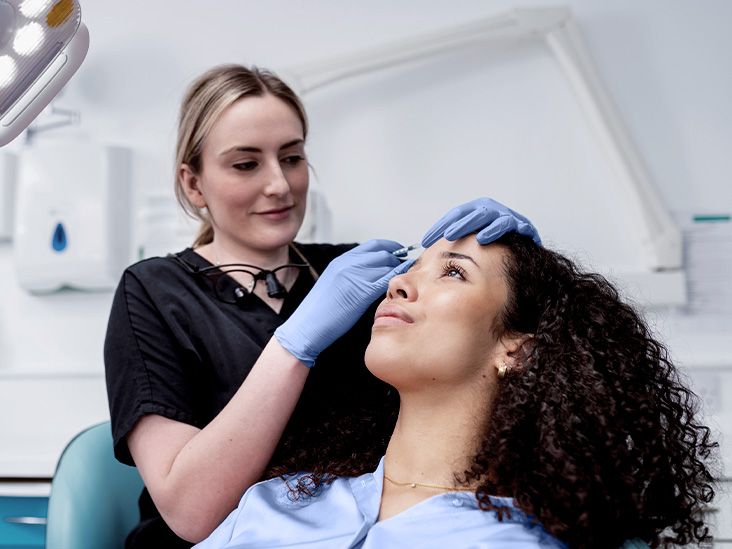Botox (onabotulinumtoxinA) is a brand-name injectable drug for medical and aesthetic treatments. Aftercare instructions typically aim to help minimize your risk of bruising and prevent Botox from spreading to the surrounding muscles.
Botox is a brand-name injectable medication that paralyzes muscles temporarily. It contains the neurotoxin onabotulinumtoxinA, which comes from the bacterial strain Clostridium botulinum. Botox injections are safe, as only a diluted volume of toxin is necessary to work.
Doctors prescribe Botox to help manage health conditions such as:
Small doses of Botox are a common aesthetic treatment to reduce the appearance of facial wrinkles.
While Botox does not require any recovery time, consider avoiding certain actions after receiving it.
This article explains the best practices for Botox aftercare. This includes how long you must avoid exercise and whether you can drink alcohol.

If you receive facial injections of Botox, the practitioner will apply an aseptic technique throughout the procedure. This may include wearing a set of sterile gloves or gown. This helps minimize the risk of infection at the injection sites. They will clean your face with a sterilizing solution before and after the injections.
Post-procedure, you should avoid touching your face, including washing it, to allow the injection sites to heal fully. This typically takes
If you arrive at the procedure wearing makeup, the practitioner will remove it before giving the injections.
Afterward, it is important to follow the instructions of the practitioner. They typically recommend avoiding makeup for
The practitioner giving the Botox injection may also provide a sterile SPF 50 sunscreen to protect your healing skin from harmful UV light. Sunscreen helps reduce your risk of developing:
- sunburn
- premature skin aging
- skin cancer
Exercising increases blood flow to your skin. While it benefits your cardiovascular system, exercising too soon after Botox injections can place you at risk of complications.
Increasing blood flow around newly injected Botox can cause it to migrate from the original injection site. This can lead to paralysis of surrounding, non-target muscles.
Exercise also increases your blood pressure, which
To avoid complications, avoid doing
Follow the instructions of the practitioner who administers the treatment, especially in the hours after the procedure.
You should not lie down
Research is not adequate to establish a link between alcohol consumption and Botox treatment. But, your healthcare professional may recommend you to avoid drinking alcohol for 24 to 48 hours after the procedure.
The effects of drinking alcohol after a Botox treatment will vary between individuals. So, it is safer to avoid alcohol after the procedure. Talk with a healthcare professional to know more.
You may also want to avoid drinking alcohol for 24 hours before the procedure. This is because alcohol thins the blood, which can increase your risk of bruising after the treatment.
It is important to follow the aftercare instructions given by the practitioners treating you. If you have any questions on what to do after the procedure, ask your practitioner or a medical professional.
Other important precautions you need to take after the procedure include:
- avoid other skin treatments, such as facials for 10 days
- avoid sleeping for 4 hours after the treatment
- stay away from the sun to avoid facial flushing for 48 hours
- avoid massaging or sleeping on the injection sites for 48 hours
Botox (botulinum toxin) is a brand-name prescription injectable treatment for certain health conditions, such as hyperhidrosis and chronic migraine. It is also a common aesthetic treatment for reducing the appearance of wrinkles and fine facial lines.
It is important to follow the instructions of the medical professional giving your treatment. They typically recommend not touching the injection sites and waiting for at least 24 hours to apply makeup.
Your practitioner may advise you to avoid any activity that will increase your risk of Botox migrating from the target muscle to the surrounding muscles for a certain amount of time. This includes activities such as strenuous exercise and lying down.
